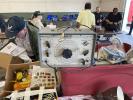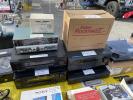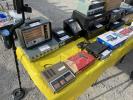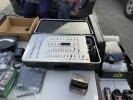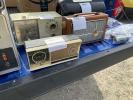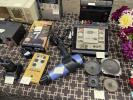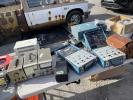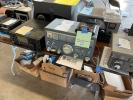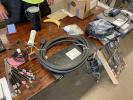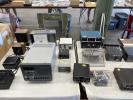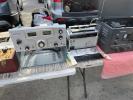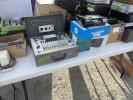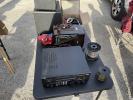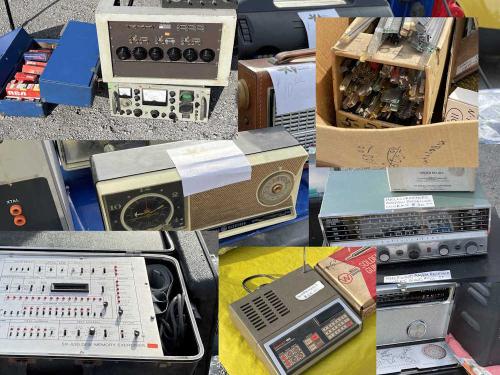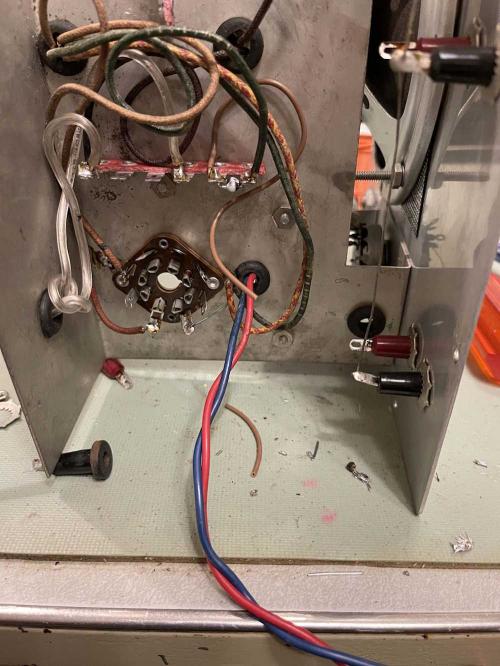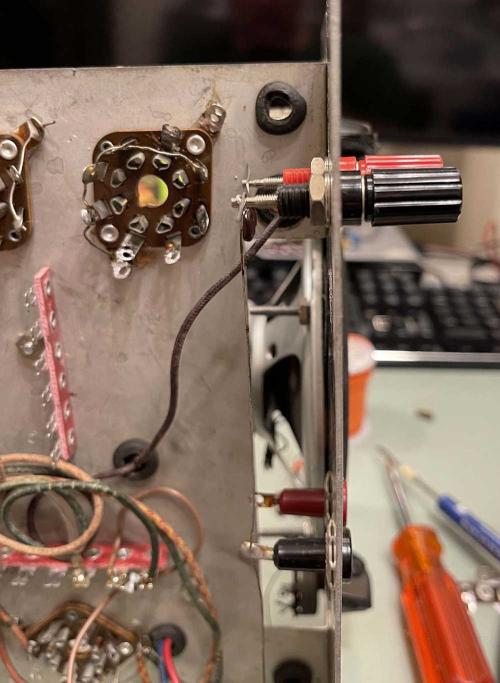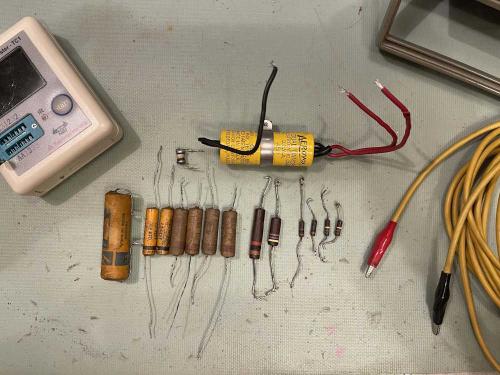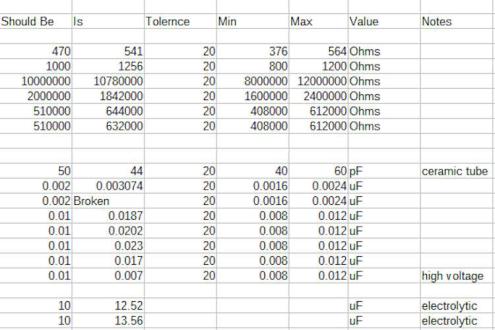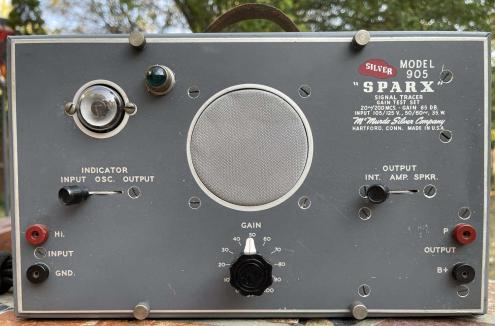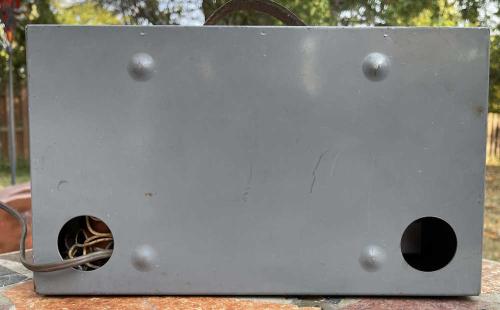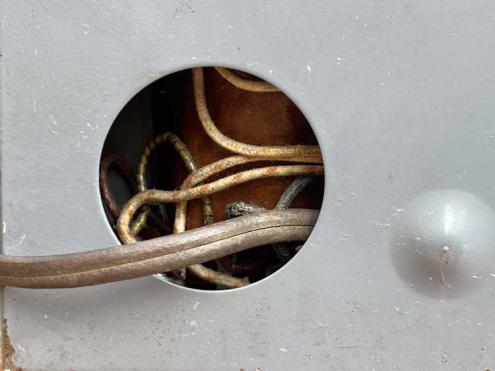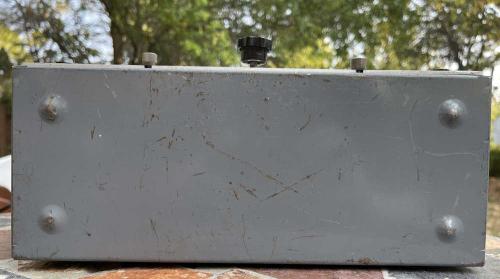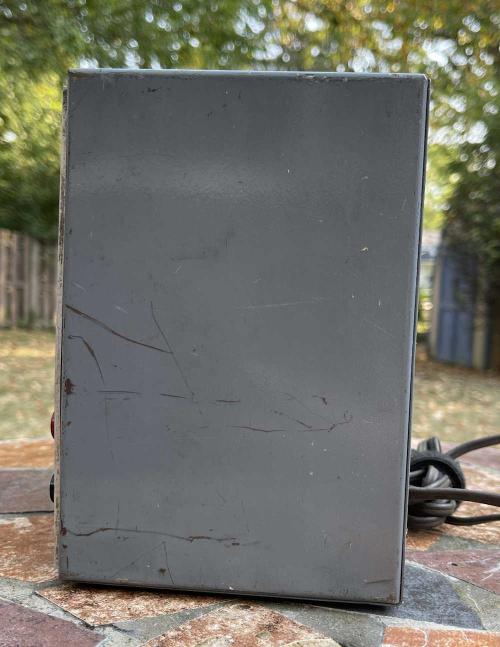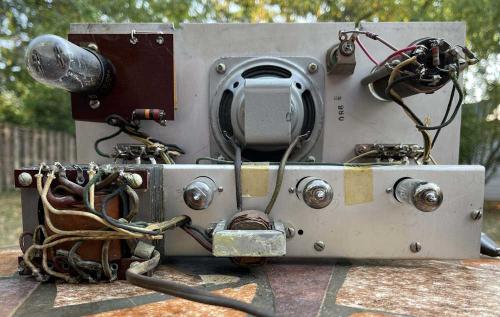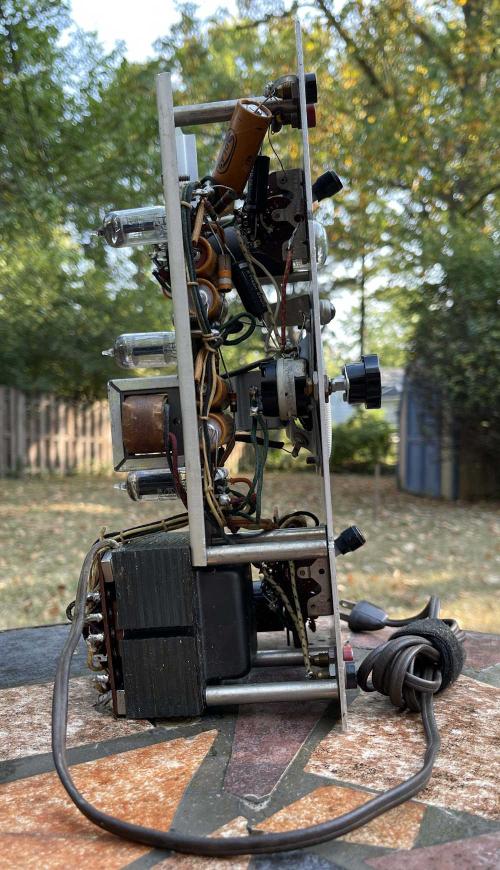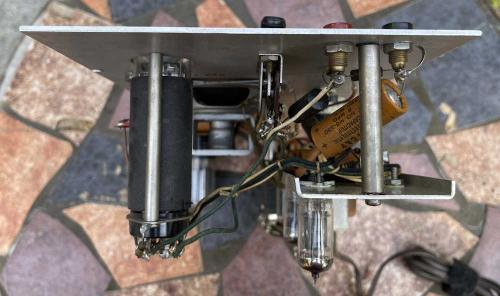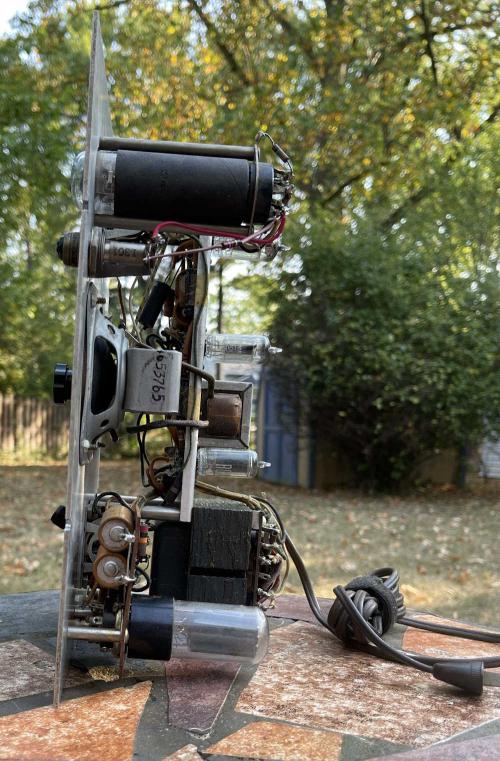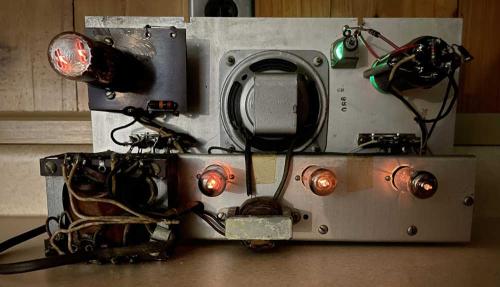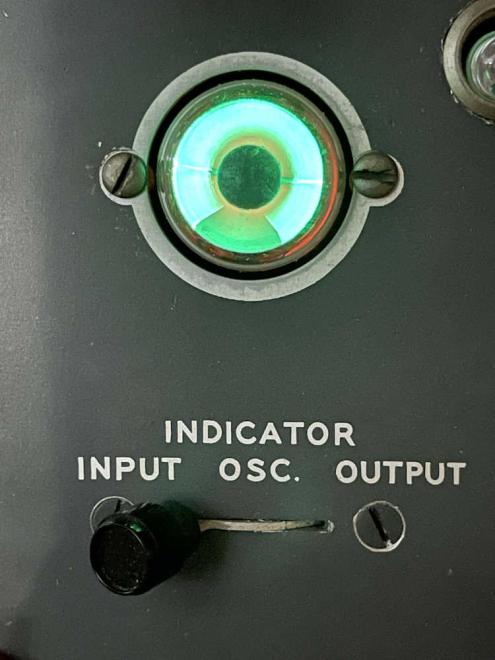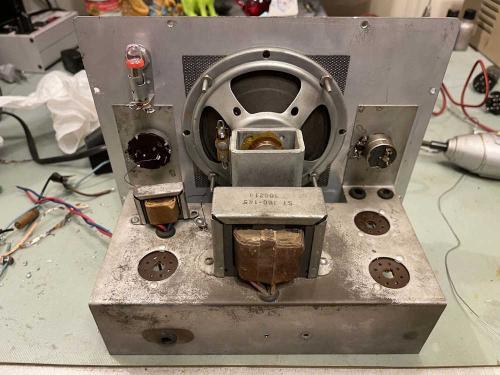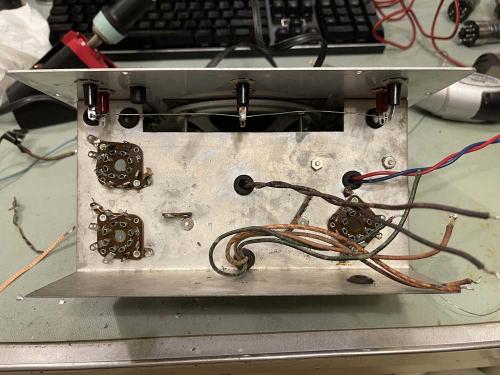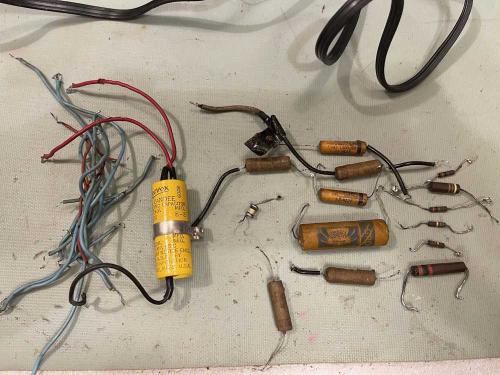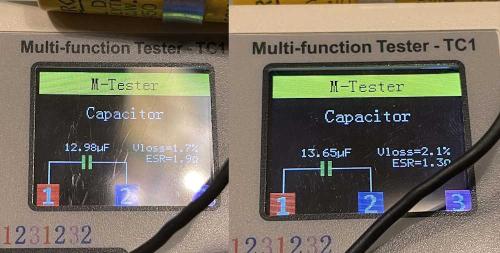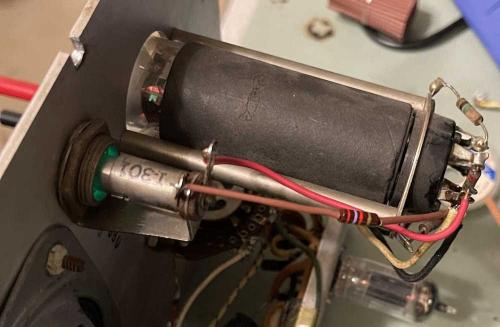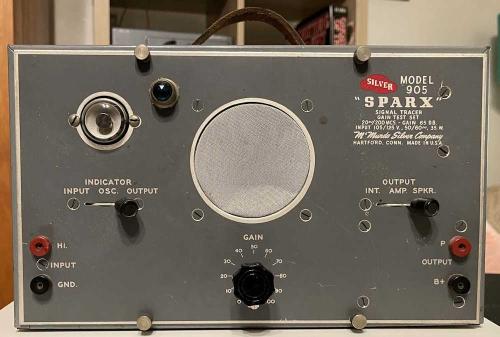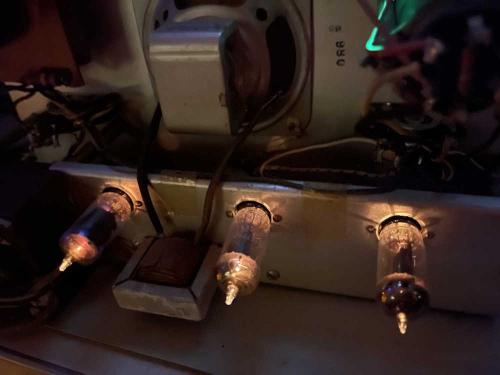- 2024
- Sep
- 24
Pictures from the 2024 Cleveland Hamfest.
As stated earlier, this was my first time attending this show, and I didn’t leave unhappy. It consisted of about 4 rows of vendors in the parking lot, and a small building mostly full of vendors. There was certainly plenty to look at, and prices were generally very reasonable. Everyone was willing to deal, so I’ll blame that for my haul.
The fairgrounds are tucked behind some houses, so we had to make a go-round and get back to the entrance, having turned the wrong direction the first time. But no big deal, we arrived at 8:15 and spent about three hours browsing the warm, sunlit aisles of stuff.
The trip home warranted a stop in Coshocton for lunch and a brew at Wooly Pig, a place I highly suggest you check out if you are in to that sort of thing
Here’s what you’re waiting for, all of the things I saw at the show.
.
Next show may be Piketon, that’s a “If I feel like it” thing. You can check out directions to that show by clicking this link.
Regardless, there’s also MARCS and Fort Wayne, as well as the Antique Show at the state fairgrounds to come. See you there!
- 2024
- Sep
- 24
The Scioto Valley Amateur Radio Club Hamfest
I’ve attended a lot of shows this year, mostly because I’m unsure as to what’s going to happen later - if some sort of unrest begins, that may cancel shows for a while. So … git while the getting’s good, I guess!
I’m not sure if I’ve been to this one, I seem to remember a small show in Southern Ohio that I went to back in the 90s, my first small “Not Dayton” hamfest. It had some decent things, but was a really small show - I still have the big NIXIE counter purchased from that event.
Regardless, “If I Feel Like It,” I’m going to head down there and check it out.
The Scioto Valley Amateur Radio Club Hamfest
Saturday October 5th 2024
8A - 12P
Admission $5
Pike County Fairgrounds
311 Mill Street
Piketon, OH 45661
https://www.arrl.org … radio-club-hamfest-2
There’s not really a lot of information on this one beyond the date and location, if you need to know more please email the club’s officers.
- 2024
- Sep
- 24
Pictures from the Cleveland Hamfest are on the way.
I was pleasantly pleased by the Cleveland Hamfest. There were quite a few vendors there, and some good things to see.
I’m processing pictures, but life got in the way last night and I couldn’t finish them…stay tuned!
- 2024
- Sep
- 21
An Eico 145 Signal Tracer - Part 6a - Starting the rebuild
This post starts the rebuilding of the Eico 145 signal tracer I’ve been working with since picking it up at the Breezeshooter’s Hamfest in 2023. This will consist of probably 4-6 parts (maybe more,) depending on how much time I have to work on it.
The first part is starting the power supply - I’m not going to do this exactly as the manual says, since there will be some extra stuff on the chassis. I’m going to do the power supply completely, then generally follow the assembly manual for the rest of the device.
First things first, I noticed the 4 position terminal strip closest to the rectifier tube couldn’t be mounted like the assembly drawing shows - it’s too long! That’s why the original builder chose to turn it to the side. No matter, I needed more positions so I put a longer strip in and turned it perpendicular to what the manual said. This gave me some room to add the two heater cutback diodes at the top of the strip. I didn’t bend those leads in, but chose just to drop them in the strip and solder. No, that’s not the way you’re supposed to do it, but I made sure the solder joint was solid.
I’m trying to keep the AC all in one spot, except for the filaments which obviously have to run across the chassis.
One thing you should note here is that one side of the filaments, and the center tap of the primary all go directly to chassis. This may seem kind of odd, but it helps reduce the hum present in the unit. Instead of connecting grounds everywhere, I tried to keep all of the AC running to the same ground tab. We’ll see if that makes any difference.
It is kind of a mess here, but I didn’t want to cut wire off the transformers, so I looped it where needed, and used the length to try and neatly run things to their destination. It is what it is.
Everything except for the filaments, and the AC return from the switch has been wired in. I’ll do the rest once I get the proper color of wire (more on that later.)
The only other part I did tonight was replace the front panel pin jacks on the input with a nice set of banana jacks. These are much more useful to me than the pin jacks. Note the new 50pF mica laying on the terminals, this was being sized but I don’t want to solder it in until I get some more wire.
Next part will involve placing the new filters and the rest of the power supply components.
Next part of this series: https://wereboar.com … ng-the-power-supply/
Previous part of this series: https://wereboar.com … cer-component-notes/
- 2024
- Sep
- 20
An Eico 145 Signal Tracer - Component Notes
It doesn’t really mean anything, but I wanted to check all of the components I took out of the Eico 145 Signal Tracer that’s currently on my bench. There was nothing unexpected here, most of the parts had drifted out of tolerance - or in one case, broke upon removal.
I didn’t test anything for leakage, and that’s probably where the majority of the issues would be.
The resistors were all carbon comp 20%, and most of the capacitors paper wax - assumed 20%. One ceramic tube capacitor was present - supposed to be a mica - as were the electrolytic filters. The electrolytics are assumed to be -20% / +100%. ESR on these wasn’t bad, but they’re due for replacement regardless.
Some capacitors weren’t present in the device, I’m not sure if they were never there or if they were removed for some reason.
Here’s the parts and their values, no particular order.
Next step is to start rebuilding. I’m going to deviate from the assembly diagram somewhat and build the power supply fully before moving on to the next part.
Next part of this series: https://wereboar.com … tarting-the-rebuild/
Previous part of this series: https://wereboar.com … ignal-tracer-part-5/
- 2024
- Sep
- 19
The 50th Annual Cleveland Hamfest is happening this weekend.
The 50th Annual Cleveland Hamfest (And Computer Show) is happening this weekend.
I’ve never been to this one, so I’m not sure what to expect - but 50 years worth seems to indicate that it’s well attended enough to keep going.
I decided to check it out because prices this year have been incredibly cheap due to the bad economy, and it’s giving me a chance to pick up some things I’ve wanted but couldn’t afford in the past. I’m also looking towards things getting really strange later - who knows what’s going to happen and how it’s going to affect this stuff. Get it in now while it’s available!
The Cleveland Hamfest and Computer Show
Berea Fairgrounds, Eastland Entrance
160 Eastland Rd
Berea, OH 44107
September 22 2024
8A - 12P
https://www.hac.org/
- 2024
- Sep
- 19
The McMurdo Silver “Sparx” Model 905 Signal Tracer - Photos
One of the things I like to do before closing up a device (permanently, or for a while) is to do a good photo retrospective showing layouts, parts, etc. It usually will be submitted to someplace for posterity, and displayed here for your enjoyment. You can also check out Radiomuseum, who accepted a number of pictures for their exhibit on the device.
I had to resize these - they were simply too large and were causing some issues.
The 905 tracer is going on display for the moment, so here are some photos of all the goodies inside:
The front of the unit. The pilot lamp was not original on this unit, and this one received a nice LED bulb. I pulled the screen out and knocked the dents out as best I could, you can still see a little wrinkling there.
Here’s the back. Note the big holes for cables at the bottom, this one only has a power cord.
You can reach in and touch the transformer taps. Designed for those who have some sense.
This unit has little dimples for the feet, so no crushed rubber.
The side. It’s…the side.

The device uses a leather handle. It’s still intact, but I’ve tried not to use it.
Here’s some shots of the chassis:
The best part - the tubes are all lit up:
In all, this is a pretty cool device and doesn’t have a lot of things other than it’s basic function of amplifying sound. For now, it’s going to be a showpiece - but eventually it will be used as a small amp in my main room, as I already have a tracer I’m working on rebuilding. I am planning on replacing filters and other electrolytics on this at some point, so stay tuned!
- 2024
- Sep
- 15
An Eico 145 Signal Tracer - Part 5
Before you can put new parts in, you have to take the old parts out. So I did. I decided to just pull everything, clean up the connections, and replace everything all at once. Would I suggest doing it this way? No, not unless you’ve got a decent amount of experience building this kind of device, you have a decent amount of experience in general, or you’ve done this before. It’s better to replace each part individually - but since this chassis was kind of sloppy I decided to do it all at once.
To be honest, this wasn’t put together the best. Some of the components were installed properly, leads through the connection holes and wrapped to make a mechanical connection first. Others were just tacked on and pulled right off with the application of a little heat. Others were simply run willy-nilly with electrical tape and whatever was available. I have to assume that it had been repaired a number of times in it’s past. Hopefully, now that the chassis is clean it will look a little better going back together.
There were a few things left in. Transformers were left connected in some spots, and the jumpers that run around some of the sockets were left in place. All other things were removed.
There are surprisingly few parts in this thing.
I’m planning on measuring some of them later to see how far they’ve drifted, but I did decide to check the electrolytic to see if it was bad or good.
Yeah, they’re ok. Well within the -20/+100% tolerance, but the ESR is creeping up. They’d probably be fine for a while longer but there’s no need to keep them in there.
Something of note here: If you look at the removed parts, right beside the dual-section electrolytic is a little white tube. This is C1, which is supposed to go across the input terminals. Parts list says it’s a mica capacitor, and the drawings seem to show a mini postage stamp. That’s a ceramic tube capacitor - was that original, or did it get replaced at some point in it’s life? It’s old enough that it could be original, but who knows.
Next thing to do it start rebuilding. I may wait a while before I get to that, depends - if this is a rainy fall, a suitably wet Saturday may see this thing put back together. I may also just build each stage on it’s own once I get some suitable wire, and we’ll start with the power supply.
Until then - stay tuned!
Next part of this series: https://wereboar.com … cer-component-notes/
Previous part of this series: https://wereboar.com … ignal-tracer-part-4/
- 2024
- Sep
- 12
The McMurdo Silver “Sparx” Model 905 Signal Tracer - Update
I decided to sit down with this device last night - the intention wasn’t to fix it, but to clean up the pilot lamp wire and get it prepped for a little more troubleshooting this weekend.
Whomever added the pilot lamp did a great job mechanically, but a terrible job electrically. I didn’t take a picture of the “before,” but this is the “after” wire that was removed:
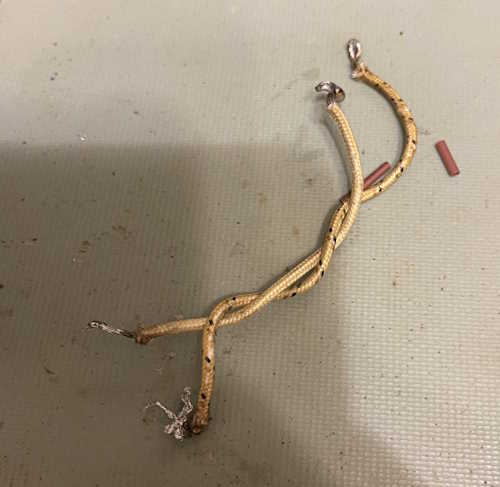
The pilot is tapped off the filament voltage for the eye tube, and all filaments are in parallel. The tube socket for the eye has two eyelets for each pin, so you can do exactly this - but the person just kind of tacked the wires into the holes with a big blob of somewhat cold solder. It worked, but there was pieces flying everywhere and enough solder to do all the pins. I removed that, wicked it clean, re-seated the filament wires for the tube, and continued with my cleanup.
I’m using an LED #47 replacement to keep the current draw low - the device wasn’t designed with a pilot in mind so I want to keep the transformer happy. A 2.7k resistor of the proper vintage and some small heat shrink does the job - the resistor is needed because the LED bulb is blindingly bright, and I wanted to cut it back to a more reasonable “I’m on but not lasering your eyes” brightness.
I probably should have J-hooked a longer wire on to the resistor and moved it closer to chassis to keep AC from flying around, but it’d not enough for me to worry about. There are other filament wires winding all over the place, the little bit of emission from the resistor isn’t going to do squat.
While I was sizing the resistor (I have a junk bin of older parts) I bumped the input 6C4, and the unit crackled to life. I finished up my resistor installation and hooked the signal generator up - 1kHz came blaring out of the speaker. Turns out the sockets are a bit flaky, which is not a surprise for a device that’s looking 80 years old square in the face!
The speaker is a bit rattley, so it (and the filters) will need to be replaced. The screen also needs to be knocked out, so I’ll do the speaker and screen at the same time - assuming I can find a properly sized speaker, that is.
Beyond that - and after a liberal dose of Deoxit to quiet the moving parts - the fire bottles are full of fire and the device is happily spitting out audio from a crystal radio.
A new cord, some maintenance, and this guy is going out in the main room to be used as a small amp. Strap on your cap gun and get your mask, the Lone Ranger is on soon!
- 2024
- Sep
- 11
A couple more Ohio shows that I may get to…
There’s a couple of smaller shows I’ve been considering checking out - and with the prices on stuff being good this year, it may be worth the time.
The first is the Cleveland Hamfest. This is the 50th show, according to the promotional material. It also claims to be a computer show, but I expect the only things you’ll see now are vintage machines and used devices.
The 50th Annual Cleveland Hamfest and Computer Show
Sunday, September 22nd, 2024
8AM - 12PM
Admission is $10
Berea Fairgrounds - Eastland Road Entrance
160 Eastland Road
Berea OH 44107
https://www.hac.org/
The other show is the MARC Hamfest in Green, Ohio (Near North Canton.) This one is held in the main hanger / event hall of a local air museum, so it may be worth the go just to see the museum grounds as well. Pictures suggest it’s pretty well attended, but we’ll see with the economy being crap:
MARC Hamfest
Sunday, October 27th, 2024
8AM - 1PM
Admission is $10 (I think!)
Military Air Preservation Hangar
2260 International Parkway
Green OH 44232
http://w8np.net
MARC has some cool merch for the show, you can check that out here: https://praise-servi … printify.me/products
I’ve never been to either of these shows, so I have no idea what to expect. I’ll have pictures of both events to post (assuming I can go) and I’ll see you there!
